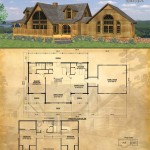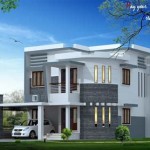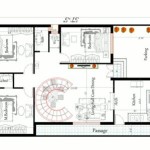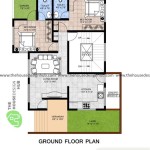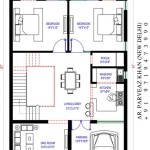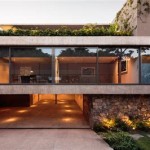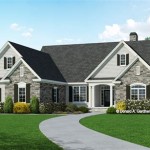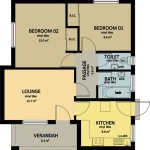Habitat House Floor Plans: Building Affordable Homes with Thoughtful Design
Habitat for Humanity is a globally recognized non-profit organization dedicated to providing safe, decent, and affordable housing. A crucial aspect of their work involves the careful consideration and implementation of house floor plans. These plans are not just blueprints; they represent the foundation for building communities and empowering families to achieve stability and improve their lives. Habitat house floor plans prioritize efficiency, cost-effectiveness, and adaptability to meet the specific needs of the families and the constraints of the available land and resources.
The design process behind Habitat house floor plans is a thoughtful balance of local building codes, environmental considerations, and the family's requirements. The organization works closely with architects, engineers, and local affiliates to develop plans that are sustainable, durable, and aesthetically pleasing. These plans often incorporate energy-efficient features and utilize locally sourced materials to minimize environmental impact and reduce construction costs.
Key Considerations in Habitat House Floor Plans: Affordability and Efficiency
Affordability is perhaps the most important driver behind Habitat house floor plan design. Maximizing usable space while minimizing the overall footprint is crucial. This approach often results in open-concept living areas that promote a sense of spaciousness within a smaller square footage. The use of simple, rectangular shapes and avoiding complex architectural details also contributes to cost savings during construction. Furthermore, efficient use of materials and standardized construction techniques are vital to reducing waste and streamlining the building process.
Beyond initial construction costs, Habitat house floor plans also focus on long-term affordability for the homeowner. Energy-efficient designs are commonplace, often incorporating features such as proper insulation, energy-efficient windows and doors, and strategically placed ventilation to reduce heating and cooling costs. Water-saving fixtures and appliances are also frequently incorporated to minimize water bills and promote conservation. The goal is to create homes that are not only affordable to build but also affordable to maintain over the long term, empowering families to achieve financial stability.
The size of Habitat houses varies depending on the needs of the family and the availability of land, but they are typically modest in size. The focus is on providing essential living spaces – a living area, a kitchen, bedrooms, and bathrooms – that are functional and comfortable. Rooms are often designed to be multi-purpose, allowing for flexibility and adaptation as the family's needs evolve over time. This design approach prioritizes quality over quantity, ensuring that the home provides a safe and supportive environment without unnecessary extravagance.
Adaptability and Family Needs: Designing for Diverse Lifestyles
While affordability and efficiency are paramount, Habitat house floor plans are far from one-size-fits-all. The organization recognizes that each family has unique needs and preferences, and strives to incorporate elements of adaptability and customization into the design process. The number of bedrooms, the layout of the kitchen, and the arrangement of living spaces are all carefully considered to meet the specific requirements of the family who will be living in the home. For example, a family with young children may prioritize having a playroom or a large backyard, while a family with elderly members may require accommodations for accessibility.
Habitat for Humanity works closely with prospective homeowners to understand their needs and preferences. This collaborative approach ensures that the final floor plan reflects the family's lifestyle and priorities. While significant changes to the standardized floor plan may not always be feasible due to budgetary constraints, minor modifications and personalized touches are often incorporated to create a sense of ownership and belonging. This customization process is a vital part of the Habitat model, empowering families to actively participate in the creation of their new home.
Furthermore, Habitat house floor plans often incorporate features that promote community interaction and social cohesion. Front porches, shared green spaces, and community gardens are commonly included in Habitat developments to foster a sense of belonging and neighborly connection. These features not only enhance the quality of life for the residents but also contribute to the overall vibrancy and resilience of the community.
Accessibility is another crucial consideration in Habitat house floor plans. Universal design principles are often incorporated to ensure that the home is accessible to people of all ages and abilities. This may include features such as wider doorways, ramps, grab bars, and accessible bathrooms and kitchens. Incorporating these features not only benefits individuals with disabilities but also makes the home more adaptable and comfortable for everyone, regardless of their physical condition.
Sustainability and Environmental Responsibility: Building Green Homes
Habitat for Humanity is committed to sustainable building practices and environmental responsibility. Habitat house floor plans are designed to minimize environmental impact by incorporating energy-efficient features, utilizing locally sourced materials, and promoting water conservation. The organization also encourages the use of renewable energy sources, such as solar panels, whenever feasible. The goal is to create homes that are not only affordable and comfortable but also environmentally friendly.
The selection of building materials is a crucial aspect of sustainable construction. Habitat house floor plans often specify the use of locally sourced, recycled, or renewable materials to reduce transportation costs and minimize environmental footprint. For example, lumber from sustainably managed forests, recycled content insulation, and low-VOC paints are commonly used in Habitat homes. These materials not only reduce environmental impact but also contribute to a healthier indoor environment for the residents.
Water conservation is another key focus area. Habitat house floor plans often incorporate water-saving fixtures and appliances, such as low-flow toilets, showerheads, and faucets. Rainwater harvesting systems may also be installed to collect rainwater for irrigation purposes. These measures help to reduce water consumption and lower water bills, contributing to long-term affordability and environmental sustainability.
The orientation of the house on the lot is carefully considered to maximize natural light and ventilation. Proper orientation can significantly reduce heating and cooling costs by taking advantage of natural sunlight and breezes. Habitat house floor plans often incorporate strategically placed windows and overhangs to provide shade during the summer months and allow sunlight to penetrate during the winter months. This passive solar design approach can significantly reduce energy consumption and improve indoor comfort.
In addition, Habitat for Humanity often partners with local organizations and government agencies to promote energy efficiency and sustainable building practices. They may participate in energy audit programs, provide homeowner education on energy conservation, and advocate for policies that support sustainable housing development. This collaborative approach helps to create a more sustainable and equitable housing system for everyone.
In summary, Habitat house floor plans represent a thoughtful and comprehensive approach to affordable housing. By prioritizing affordability, efficiency, adaptability, and sustainability, these plans provide the foundation for building safe, decent, and affordable homes for families in need. The organization's commitment to collaboration, innovation, and environmental responsibility ensures that Habitat homes are not only a source of shelter but also a pathway to stability, opportunity, and a brighter future.

Single Family Floor Plan For Habitat Humanity Evstudio

Habitat For Humanity Houses Floor Plans House

Awesome Habitat House Plans 6 For Humanity 3 Bedroom Floor Modular Home

New Builds And Rehabs Habitat For Humanity

About Our Homes By Habitat For Humanity In Charlotte Nc

About Our Homes By Habitat For Humanity In Charlotte Nc

House Plans That Turn Ideas Into Reality Habitat For Humanity

Plan 1288 National Affordable Housing Network

Contractor Bid Room Habitat For Humanity

Take The Path To Homeownership With Habitat Orlando Osceola

